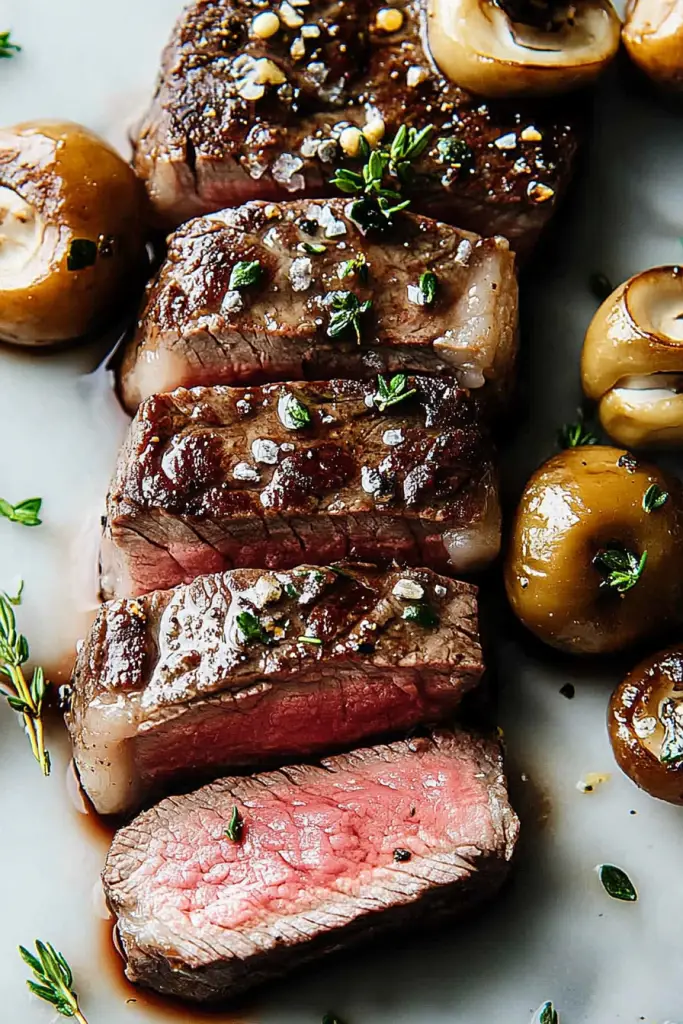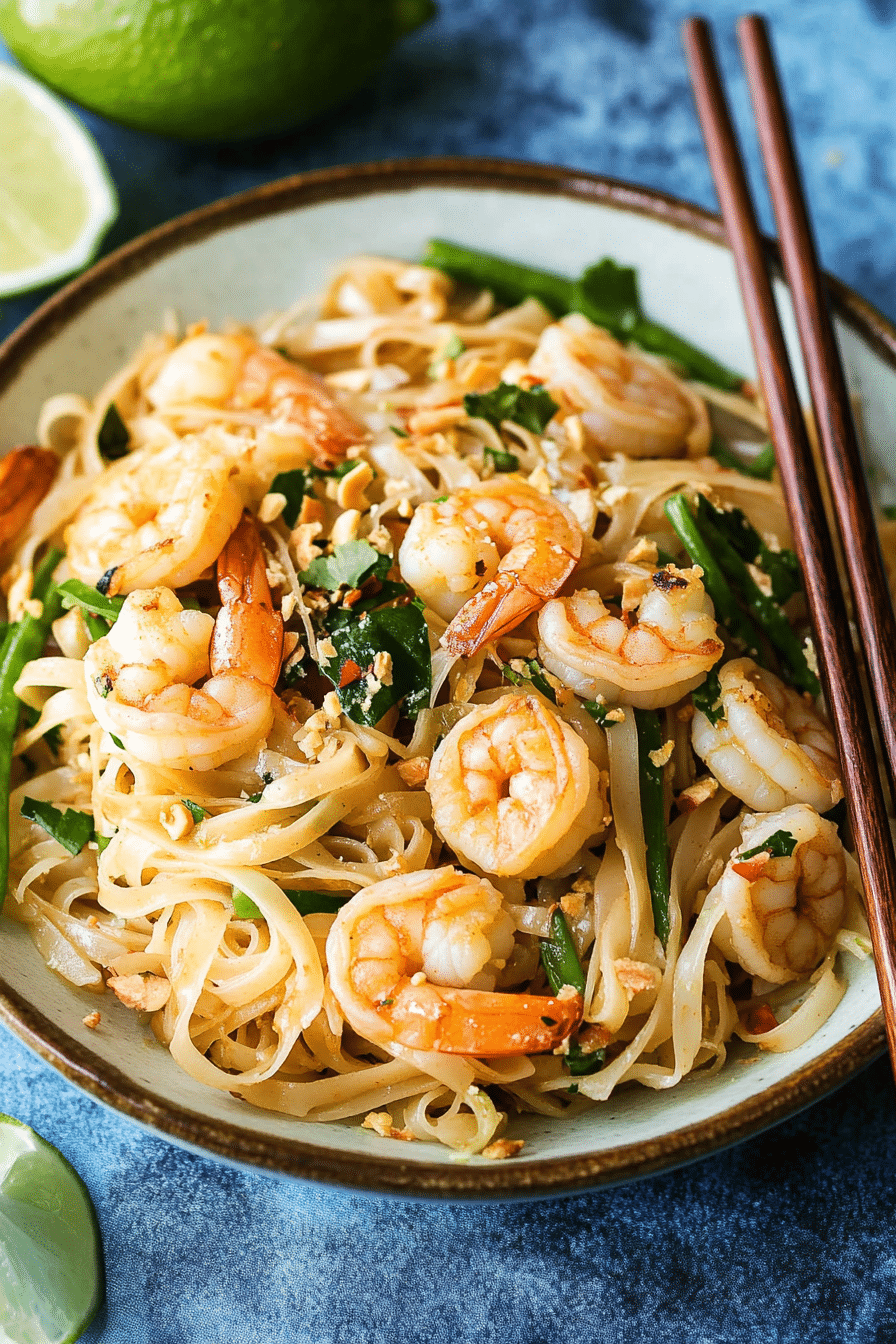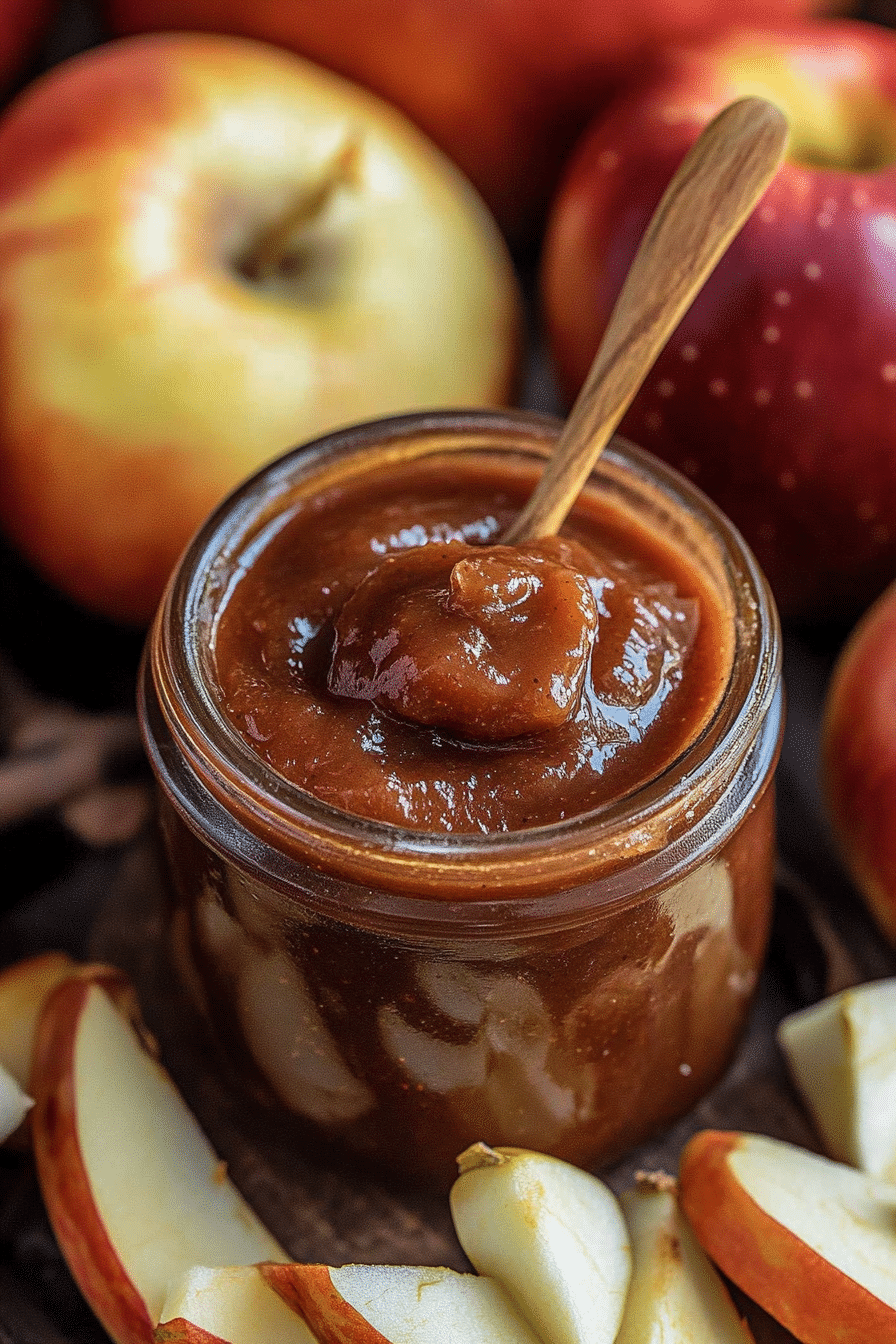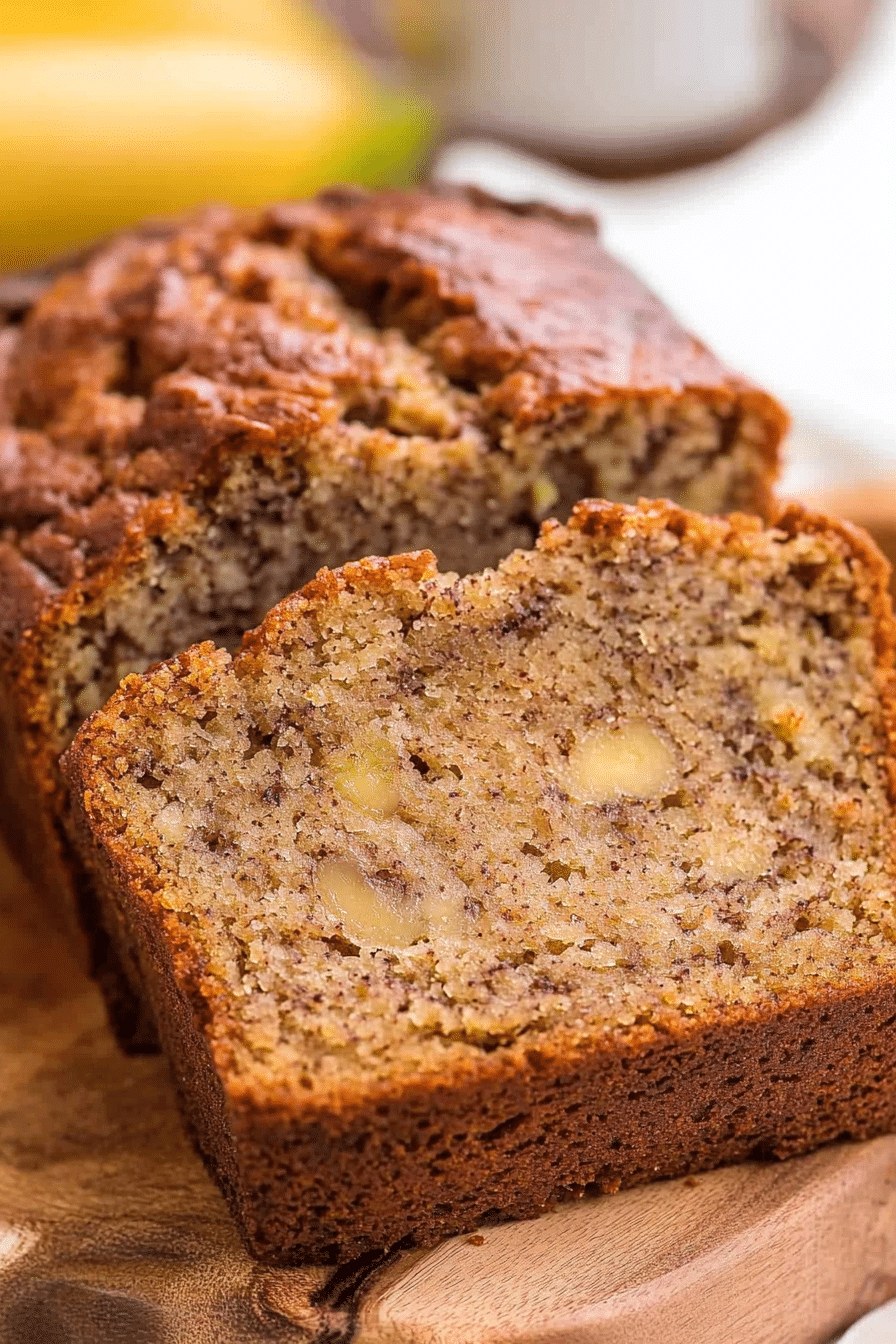Creating the perfect Rib-Eye Steak Tips is a culinary art that entices food enthusiasts from all walks of life. Whether you’re hosting a fancy dinner party or simply enjoying a meal with family, achieving that juicy, flavorful steak can seem daunting. However, with the right techniques and insider tips, you can elevate your cooking skills and impress every guest at the table. How to Cook Steak effectively will ensure a tremendous rib-eye steak experience.
Ingredients List
To embark on this culinary journey, you’ll need the finest ingredients. Quality matters immensely when it comes to crafting an exceptional rib-eye steak.
- Rib-Eye Steaks: 2 thick-cut steaks, preferably USDA Prime for optimal marbling and flavor.
- Salt: Coarse sea salt or kosher salt to season the steaks generously.
- Black Pepper: Freshly ground for a robust taste.
- Olive Oil: 2 tablespoons for searing.
- Butter: 2 tablespoons for finishing.
- Garlic Cloves: 3, crushed to release their aromatic flavors.
- Fresh Herbs: Thyme or rosemary to infuse earthy aromas. For more advice, check our tips on using herbs in cooking.
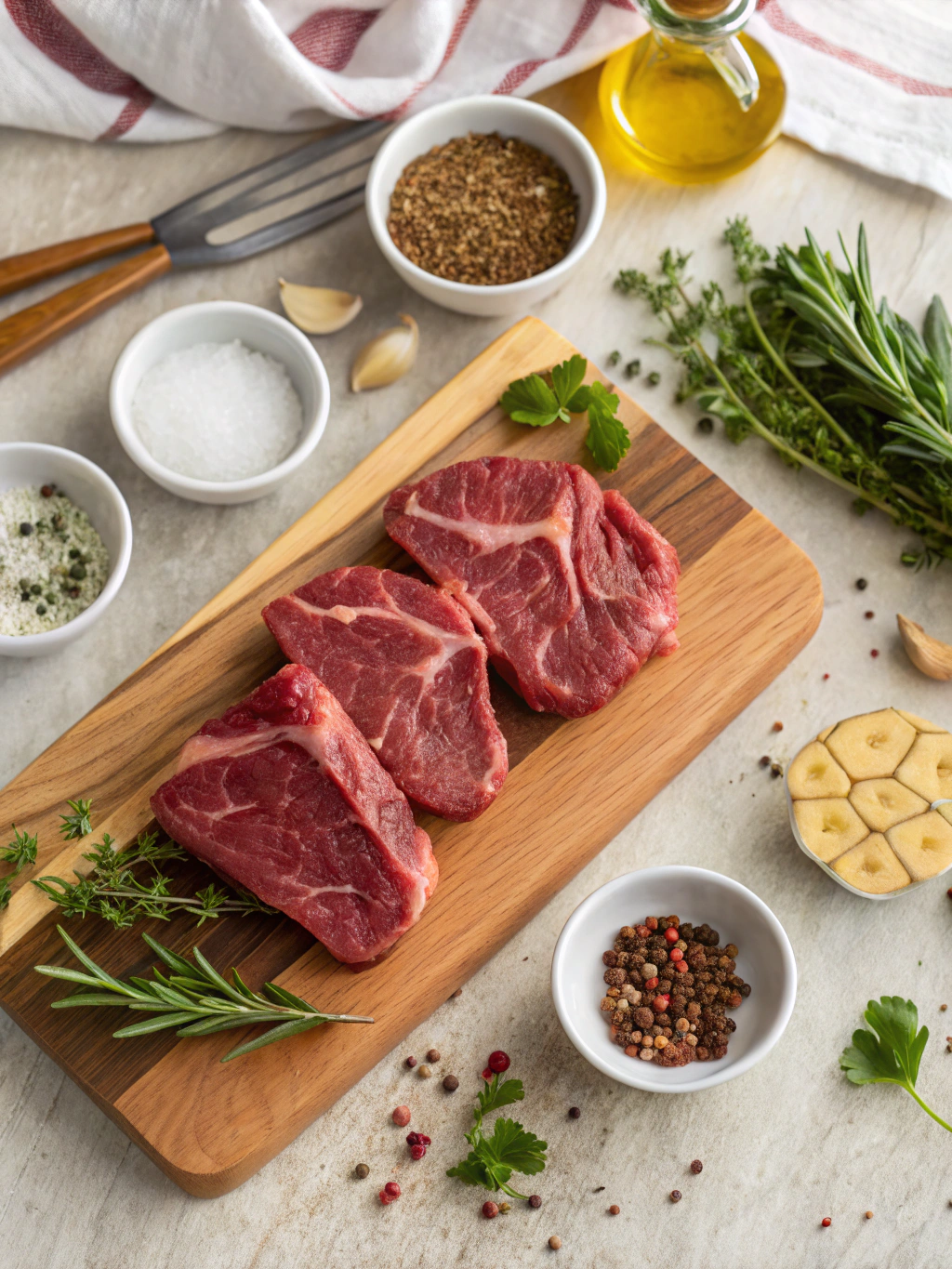
Timing
Mastering the timing of cooking and resting is crucial for achieving an epic rib-eye steak. The journey from raw steak to a sumptuous meal is characterized by a series of precise steps that shouldn’t be hurried or overlooked. The timing can influence the texture and juiciness of your steak significantly.
Start by bringing the steaks to room temperature, which usually takes about 30-60 minutes. This step ensures even cooking throughout. Depending on your preferred doneness (rare, medium, medium-well), the cooking time can vary:
- Rare: 4-5 minutes per side, reaching an internal temperature of 125°F.
- Medium-Rare: 5-6 minutes per side, targeting an internal temperature of 135°F.
- Medium: 6-7 minutes per side for an internal temperature of 145°F.
- Medium-Well: 7-8 minutes per side, with an internal temp of 150°F.
Once cooked, allow the steaks to rest for about 5-10 minutes. This resting period enables the juices to redistribute, delivering a tender bite when served. Understanding the Best Way to Cook a Steak will enhance your results.
Step-by-Step Instructions
Step 1: Prepping the Steaks
Begin by patting the rib-eye steaks dry with paper towels. Season them liberally with salt and Black Pepper. Ensure you have a nice, even coat for maximum flavor infusion. Let them sit while you prepare the remaining ingredients.
Step 2: Heating the Pan
Place a cast-iron skillet on the stove over medium-high heat. Add olive oil and allow it to heat until shimmering but not smoking. This step is critical for achieving a beautiful crust on your steaks.
Step 3: Searing the Steaks
Carefully place the steaks in the skillet, ensuring they are spaced apart to allow air circulation. Sear the steaks without moving them for 4-5 minutes until a rich, golden-brown crust forms. Flip the steaks and repeat on the other side for another 4-5 minutes.
Step 4: Infusing with Aromatics
Lower the heat to medium and add crushed garlic cloves, butter, and fresh herbs to the skillet. Use a spoon to baste the steaks with melted butter and aromatics for 1-2 minutes. This step imparts a fragrant flavor to the steaks.
Step 5: Resting and Serving
Remove the steaks from the heat and place them on a cutting board. Allow them to rest for about 5-10 minutes before slicing. This resting time ensures that the meat remains juicy and flavorful upon serving.
Nutritional Info
Understanding the nutritional profile of your meal is essential, especially when savoring a rich dish like rib-eye steak. A standard serving (around 3 ounces) provides approximately:
- Calories: 290
- Protein: 22g, vital for muscle growth and repair.
- Total Fat: 22g, which includes healthy fats important for energy.
- Saturated Fat: 9g
- Iron: Helps in the formation of red blood cells.
The rib-eye steak is an excellent source of essential nutrients such as zinc and vitamin B12. However, moderation is key, as high saturated fat intake can impact heart health. For more on this, read about Red Meat: Good or Bad?
Healthier Alternatives
For those seeking a healthier twist on their rib-eye steak experience without compromising on flavor, consider these alternatives. They allow you to enjoy the richness of a steak with a mindful approach to nutrition.
Lean Cuts: Opt for leaner cuts like sirloin or tenderloin if you’re looking to reduce fat content. These cuts are equally flavorful yet offering a lower fat alternative to the rib-eye.
Marinating Wisely: Use lower-calorie marinades made from citrus juices, herbs, and a touch of olive oil instead of calorie-dense sauces or butter. Marinades not only add freshness but also tenderize the meat, ensuring a succulent result.
Grilling over Frying: Grilling your steaks instead of pan-searing reduces the overall oil needed, and the charred flavor from grilled steaks can be incredibly satisfying.
Exploring these alternatives can contribute to a well-rounded diet and promote balanced nutrition without sacrificing the joy of indulging in a delicious steak.
Serving Suggestions
Pairing your Rib-Eye Steak Tips with complementary side dishes can turn your meal into a feast, fit for any occasion.
Classic Pairings: A timeless rib-eye calls for classic sides. Consider creamy Mashed Potatoes and garlic buttered asparagus that harmonize beautifully with the steak’s rich flavors.
Veggie Lovers: For a lighter option, serve your steak with a fresh arugula and rocket salad. The peppery bite of arugula provides a delightful contrast to the savory notes of the steak.
Wine Selections: Enhance the dining experience with a robust red wine like a Cabernet Sauvignon or a spicy Shiraz. These wines have bold flavors that complement the marble-rich texture of rib-eye perfectly. For more on pairing drinks, check our wine pairing guide.

Experimenting with various sides and beverages can elevate your meal, crafting a versatile and memorable dining experience each time.
To learn more about perfect pairing, check out our Rib-Eye Steak Tips.
Common Mistakes to Avoid
Avoiding mistakes beginners often make can set your steak apart and transform you into a grilling expert. Let’s explore some pitfalls to steer clear of.
Underseasoning: Never underestimate the power of salt and pepper. Ample seasoning is key to enhancing the steak’s natural flavors, ensuring every bite is flavorful and juicy.
Overcooking: Use a meat thermometer to achieve perfect doneness. Overcooked steak can become dry and chewy, missing out on the moist and succulent texture that a rib-eye should exemplify.
Skipping Rest Time: Allow the steak
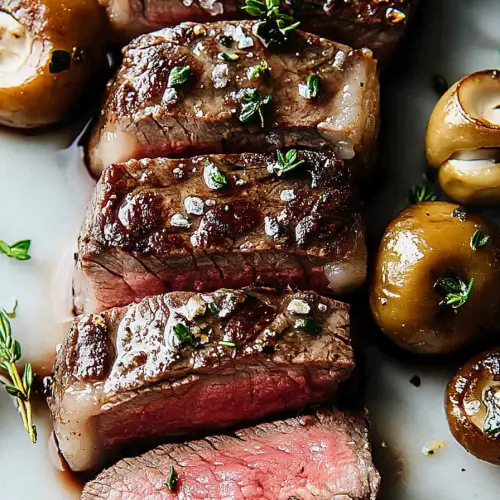
Rib-Eye Steak Tips
Ingredients
Main Ingredients
- 1.5 lb Rib-eye steak tips Cut into 1-inch cubes
- 2 tbsp Olive oil
- 1 medium Onion Chopped
- 2 cloves Garlic Minced
- 1 tsp Paprika
- 0.5 tsp Salt
- 0.25 tsp Black pepper
Instructions
Preparation Steps
- Heat olive oil in a large skillet over medium-high heat.
- Add the rib-eye steak tips to the skillet and cook until browned on all sides.
- Add the chopped onion and minced garlic to the skillet and cook until softened.
- Stir in the paprika, salt, and black pepper.
- Cook for another 5 minutes, or until the steak tips are cooked to your desired level of doneness.
- Serve immediately.
Notes
Featured Comments
“Impressed! Clear steps and absolutely loved results. Perfect for busy nights.”
“New favorite here — quick weeknight win. crowd-pleaser was spot on.”
“Super easy and turned out amazing! My family asked for seconds. Saving this one.”
“This sweet treat was absolutely loved — the light really stands out. Thanks!”
“Made it tonight and wow — turned out amazing! Will definitely make Rib-Eye Steak Tips again.”
“Packed with flavor and so simple. Exactly what I wanted from Rib-Eye Steak Tips.”


